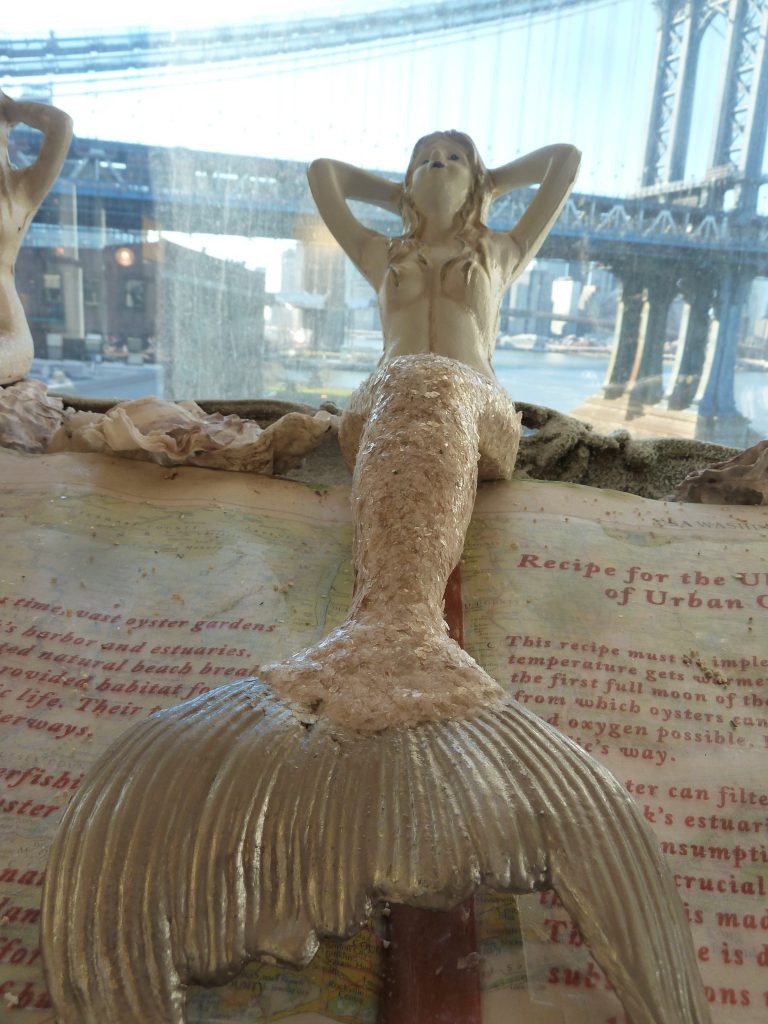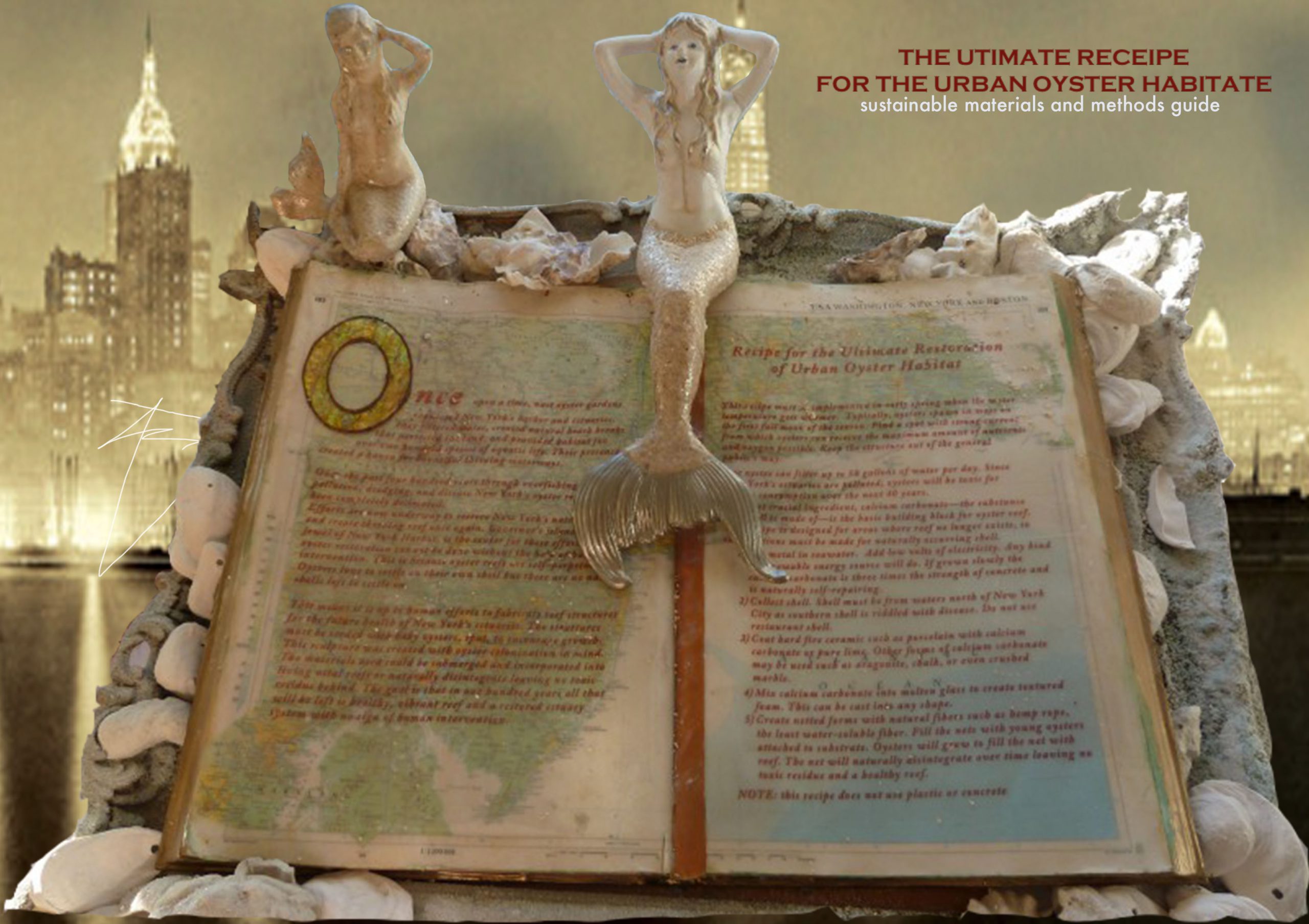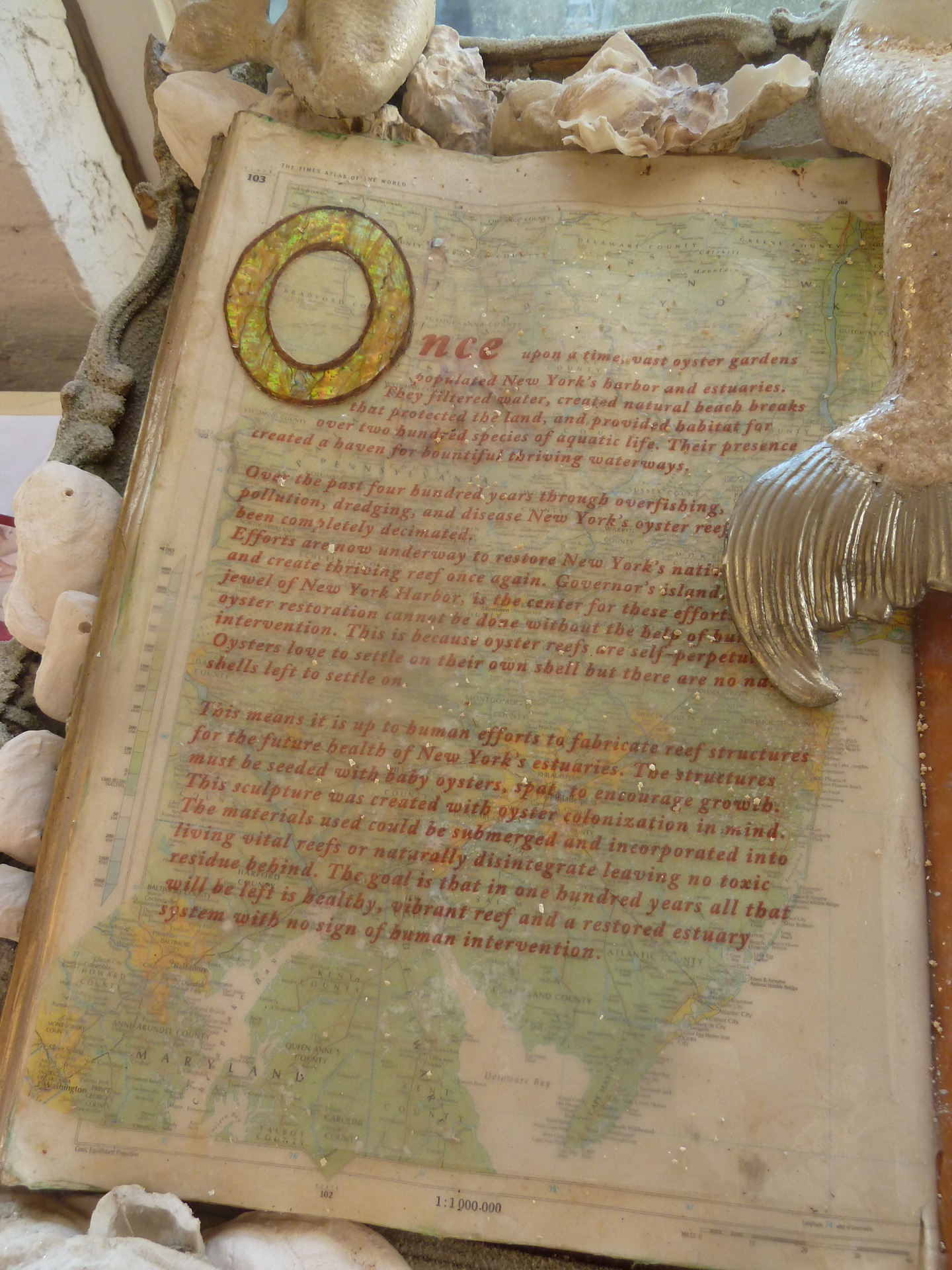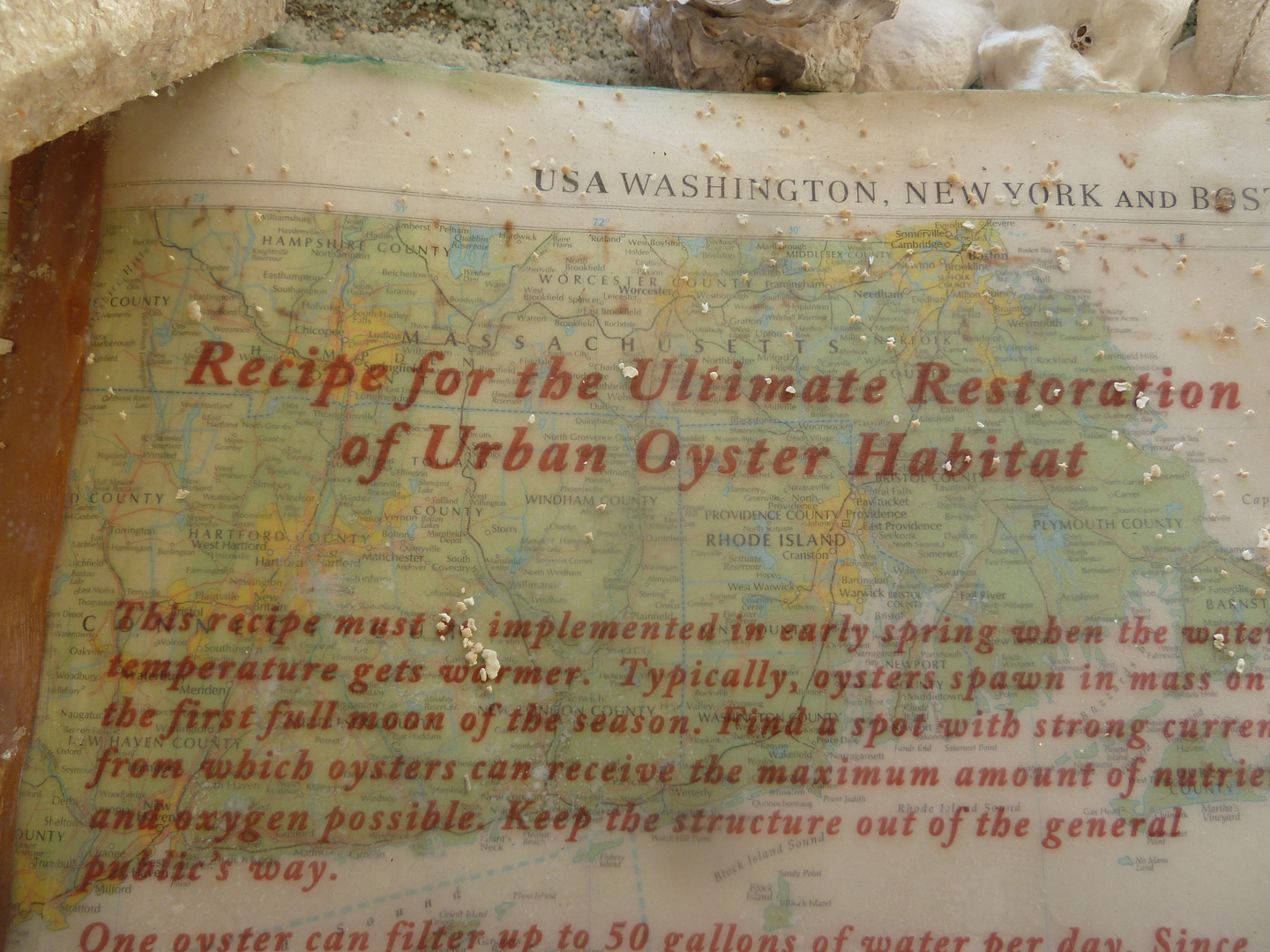
For the past ten years I have been working on a book with Meredith Comi of the NY/NJ Baykeeper which will be a handbook on sustainable reef restoration methods. Our experiments and findings will be published along with a how-to illustrated guide. The recipe below is our initial guidelines for what the book will be about which could change slightly as we repeat some experiments and try others, but I thought you might enjoy seeing the initial chapter which we are creating in fairytale style!
This recipe must be implemented in early spring when the water temperature gets warmer. Typically, oysters spawn in mass on the first full moon of the season. Find a spot with strong current from which oysters can receive the maximum amount of nutrients and oxygen possible. Keep the structure out of the general public’s way.
One oyster can filter up to 50 gallons of water per day. Since New York’s estuaries are polluted; oysters will be toxic for consumption for at least the next 40 years.
The most crucial ingredient, calcium carbonate–the substance a shell is made of–is the basic building block for oyster reef. This recipe is designed for areas where reef no longer exists, so solutions must be made for naturally occurring shell.
1) Submerge metal in seawater. Add low volts of electricity. Any kind of renewable energy source will do. If grown slowly the calcium carbonate is three times the strength of concrete and is naturally self-repairing.
2) Collect shell. Shell must be from
waters north of New York City as southern shell is riddled with disease. Do not use restaurant shell.
3) Coat hard fire ceramic such as porcelain with calcium carbonate or pure lime. Other forms of calcium carbonate may be used such as aragonite, chalk, or even crushed marble.
4) Mix calcium carbonate into molten glass to create textured foam. This can be cast in any shape.
5) Create netted forms with natural fibers such as hemp rope, the least water-soluble fiber. Fill the nets with young oysters attached to substrate. Oysters will grow to fill the net with reef. The net will naturally disintegrate over time leaving no toxic residue and a healthy reef.
NOTE: This recipe does not use plastic or concrete.




Above Image from one of the many feild trips I took with my students to monitor oyster Health, here we are at Pier 40 on the Hudson working with the River Project & using handmade boats from Village Community Boathouse.